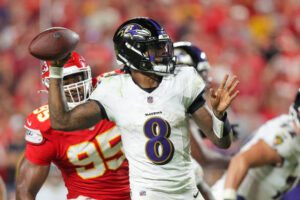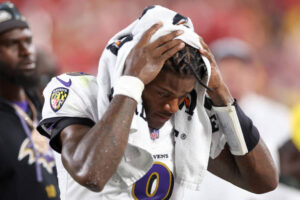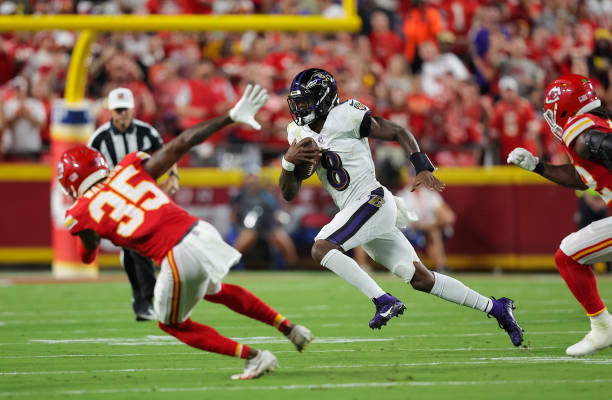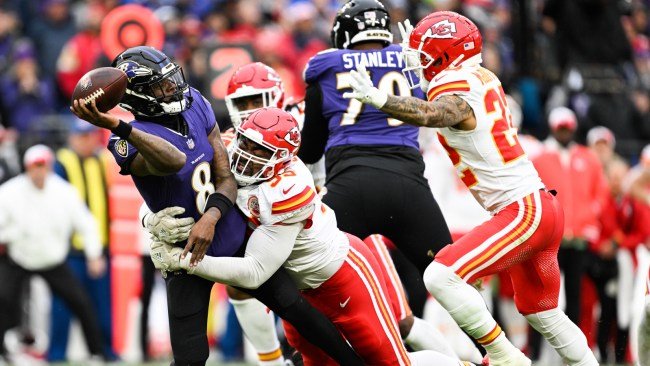As the NFL season progresses, all eyes are on Baltimore Ravens quarterback Lamar Jackson, whose unique style of play continues to captivate fans and analysts alike. Known for his electrifying running ability and dynamic playmaking skills, Jackson has become one of the most exciting quarterbacks in the league. However, recent developments regarding his physical condition and playing style have raised concerns about the potential long-term impacts on his career and the Ravens’ success.
Jackson’s running prowess has been a cornerstone of his success since he entered the NFL. His ability to evade defenders, extend plays, and gain significant yardage on the ground has set him apart from traditional pocket passers. In his MVP season of 2019, Jackson rushed for 1,206 yards, a record for a quarterback, and his dual-threat capability has continued to be a major asset for the Ravens. However, this aggressive running style also comes with inherent risks, particularly as Jackson has been visibly slimming down over the offseason.

Reports indicate that Jackson has shed a noticeable amount of weight, which he reportedly did to enhance his speed and agility. While this lighter frame could theoretically improve his performance and reduce his risk of injury in terms of agility, it also raises several red flags. The reduced weight could compromise his durability, especially given the physical nature of the NFL and the increased likelihood of taking hits during designed runs and scrambles.
Jackson’s style of play necessitates a high degree of mobility and evasiveness. However, the more he relies on his legs, the greater the risk of sustaining injuries. Quarterbacks who frequently run the ball are often exposed to hits from larger defenders, and even a slight decrease in body mass can increase vulnerability to these collisions. Jackson’s lighter frame may be less able to absorb the physical toll of these hits, which could lead to a higher risk of injury.
Moreover, the Ravens’ offensive strategy heavily revolves around Jackson’s running abilities. The team has constructed its offense to maximize Jackson’s strengths, incorporating a run-heavy scheme that leverages his unique skill set. While this strategy has proven effective, it also places significant pressure on Jackson to remain healthy. If Jackson’s ability to run effectively is compromised by his lighter weight or if he suffers an injury, the Ravens’ offense could struggle to maintain its effectiveness.The Ravens’ coaching staff and management are undoubtedly aware of these risks and have taken steps to mitigate them. Implementing a balanced offensive approach and ensuring Jackson is used strategically to minimize unnecessary hits are likely priorities. However, the inherent risks of Jackson’s playing style mean that injuries could still pose a significant challenge.In addition to physical concerns, there is the psychological impact of relying so heavily on one player’s ability to contribute both as a passer and a runner. Jackson’s performance, particularly in high-pressure situations, could become a focal point for opposing defenses, who may design schemes specifically to counter his dual-threat abilities.

Ultimately, the Ravens’ success this season will depend on how well Jackson manages to balance his aggressive running style with his physical condition. Ensuring that he remains healthy and effective while navigating the rigors of an NFL season will be crucial. The Ravens will need to carefully monitor Jackson’s health and make adjustments to their offensive strategy as needed to protect their star quarterback.
In conclusion, while Lamar Jackson’s aggressive running style and lighter frame have the potential to elevate the Ravens’ offensive capabilities, they also bring a set of challenges and risks. Balancing Jackson’s dynamic playmaking with the need for durability and longevity will be key to the Ravens’ success as the season unfolds. The coming games will be pivotal in determining how well Jackson and the Ravens navigate these concerns and whether they can maintain their competitive edge in the NFL.



